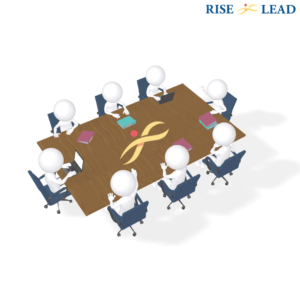
As we keep evolving in an uncertain world, the need of permanent creativity and agility made brainstorming a technique that we cannot do without.
As a reminder, brainstorming is a situation where a group of people meet to generate new ideas and solutions around a specific domain of interest by removing inhibitions.
 People are able to think more freely and they suggest
People are able to think more freely and they suggest
as many spontaneous new ideas as possible.
All the ideas are noted down without criticism and after the brainstorming session the ideas are evaluated.
While this is the theory of it, I believe we can all find a few examples of brainstorming sessions in which you have been invited and yet the roll out was not as per the definition.
Unfortunately, it does happen that we sit in meetings, where we only get a group of “happy few” that do participate and who quite often will lead by group thinking, conformity and affinity bias, while others will remain silent as they’ll worry that their ideas or concerns are not smart enough to be shared.
In some cases, the “others” might not even be invited, with often as an excuse that there would be a waste of time and energy on them, as “they do not know enough”.
With such an approach, the spirit of brainstorming, which aim is to innovate and find new ways, has been killed.
Below, I will share with you a 10 step process that you can actually apply to your work environment in order to make sure that you get ALL contributions.
- Create a safe space and clearly state it, and say it ! Nothing you say will be dismissed and there will be no judgment of your ideas
- Assign a facilitator that will be taking notes and writing down all the ideas
- Invite people with different thinking, this will avoid the perils of groupthink. As a consequence, participants must work harder to communicate their own thinking, and will need to broaden their own views to consider unexpected perspectives of others.
- Clearly state the agenda by setting out the problem question, boundaries, context and definitions
- Start with a first round of questions around the topic to make sure of full understanding and of what it is at stake
- Make sure that everyone shares by going round the table, including the facilitator if this individual is part of the team
- Ask team members to only use the language : “YES… AND…” when referring to their colleagues ideas (ban the use of NO… BUT… during the session)
- Assign a time limit, for instance 5 rounds need to happen in 20 minutes, which gives X min per person
- Review all that came out and narrow down the key questions to answer
- Create accountability by setting groups that will answer those questions
Finally, use the same process to talk about potential solutions
Now I know, this takes more work and preparation, but it is significantly valuable as it further enables nonlinear novel thinking and adaptability that innovation requires.
Always remember, “Togetherness is a choice and together, we are stronger ! “.





